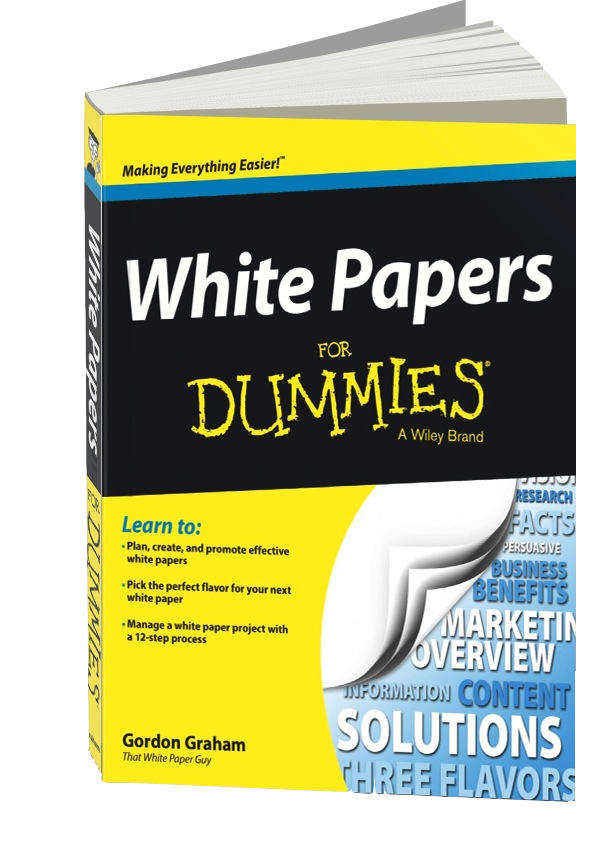If white papers sound to you like a relic of an earlier time, you’re partly right. White papers have been around since they were first used in Britain’s parliament more than a century ago.
At some point, other organizations co-opted white papers to champion ideas beyond politics. They’re still around today and Gordon Graham gladly explains their continuing relevance in his book White Papers for Dummies.
Who is this book for?
Graham, also known as “That White Paper Guy,” wrote the book for writers who create white papers, but the book explains how good white papers get published to other parties in the process, including:
- the people who commission white papers
- collaborators like graphic designers and editors
- the people who use them to evaluate business offerings
Graham packs useful information on every one of the more than 350 pages of this book as he draws on his experience of writing more than 200 white papers.
How can you use this book?
Writers may use Graham’s wisdom to structure their projects, to maximize their chances of success. For instance, Graham helps people avoid misunderstandings at the outset by explaining the differences between “White Papers and Other Documents.” Some businesspeople might want to give their marketing materials more gravitas than they deserve by referring to them all as white papers. (This has happened to me, and I’ve had to explain to my client why the people who pick up their “white papers” might feel deceived when they find out they’re actually holding brochures or sell sheets.) Graham explains the difference between such materials in a convenient table and the section that follows.
This is one of many pearls that writers can use to help project teams avoid traps. (If team members continue to insist, try explaining the dangers of hype. Graham mentions this in a section called “Leaving Out the Bitter Ingredients.”)
The smartest thing about Dummies books is their “Parts of Ten,” a chapter at the end of the book that summarizes key takeaways. Graham provides three such chapters:
- solving ten common white paper problems
- ten white paper design tips
- ten ways to create a great title
Telling it like it is
Graham gleefully adapts the fun tone common to Dummies books. For instance, rather than play up notions of 40 different types of white paper, he narrows the field to three and labels them each with a top-selling flavour of ice cream (then carries the metaphor to the previously mentioned “Leaving Out the Bitter Ingredients”).
He’s also honest enough to explain that some businesses use white papers to create FUD (fear, uncertainty, doubt) to plague their competitors. Marketing isn’t always about being nice, after all.
Where I would start this book
Of greatest interest to me was the section “From Foggy Idea to Finished Document.” Graham breaks down the whole process, from initial idea to getting the finished paper into the hands of a sales prospect, into all the details that matter. The whole book, in fact, follows this theme, offering practical tips and listing both success factors and potential traps.
Graham even packages “four possible paths to the future” or the different ways in which businesses can repurpose white paper content for the digital age. Some of these methods have come to be, and I suspect others will make themselves apparent as companies seek the best ways to make their content marketing efforts pay dividends.
It’s not just about white papers
Throughout the book, business writers and copywriters will find tips that apply to all sorts of business writing, not just white papers. The subtle point made throughout is that good content, and the people who create it, remain in demand. The writer may need to learn new skills, or collaborate with people in different fields to publish the content, but the craft of creating compelling content for businesses continues to matter, and we all need to pay attention to it.
Get to know the author
Graham would be pleased, of course, if you buy White Papers for Dummies, but you can also make his day by joining his LinkedIn group, Get More From Your White Papers. Members share tips, refine their knowledge, even post the occasional white paper writing lead.
